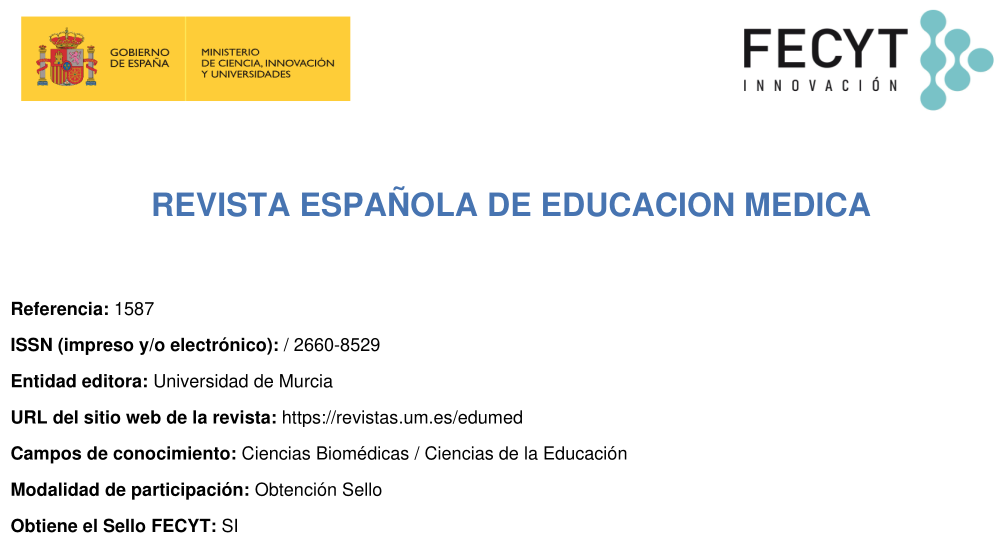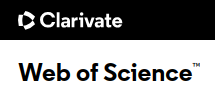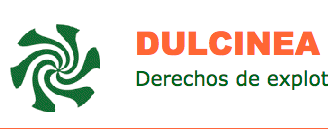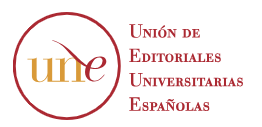The digitalization of teachers in the SARS-CoV-2 pandemic challenge. The adaptation of the cloister of Quirónsalud Madrid
Abstract
The digitalization of university teaching staff is an aspect that has taken on special relevance in recent months, especially in the field of healthcare. Face-to-face classes have been abruptly cancelled and replaced by online teaching due to the health crisis. In addition, all the health care providers have taken on the burden of providing care, making it compatible with the virtual classes. Several Quirónsalud groups hospitals carry out part of the academic plan for the degree in Medicine at the European University. However, the teaching has had to be transformed, using digital tools that allow the teaching work and the arduous hospital work to be blended. This article presents the data on the teaching carried out and the initiatives that have been implemented since March 2020 with the aim of analyzing the adaptation of the medical teaching staff of the Quirónsalud group to the situation that has occurred. The use of asynchronous tools has favored the autonomous work of the student and the compatibility of healthcare activity and teaching in hospitals through initiatives such as online synchronous classes, recorded seminars and spoken presentations, among others.
Downloads
Metrics
-
Abstract1017
-
pdf (Español (España))611
References
Bermejo Fernández-Nieto J, Suarez Sánchez MC. La función pedagógica del médico docente como oportunidad. Anamnesis y tratamiento. Educ Med, 2019, In press, DOI: https://doi.org/10.1016/j.edumed.2019.10.017.
Selwyn, N. Profesores y tecnología. Repensar la digitalización de la labor docente. Boletín de la Institución Libre de Enseñanza, 2016, 104, 27-36.
INTEF. Marco Común de Competencia Digital Docente. Aprende Intef [Internet] 2017 [acceso 24 de junio de 2020], 1-83. Disponible en: https://aprende.intef.es/sites/default/files/2018-05/2017_1020_Marco-Común-de-Competencia-Digital-Docente.pdf
Rangel A. Competencias Docentes Digitales: Propuesta de un perfil. Rev de Medios y Educación, 2015, 46, 235-248. DOI: http://dx.doi.org/10.12795/pixelbit.2015.i46.15
Ferro, C, Martínez, AI, Otero, MC. Ventajas del uso de las TIC en el proceso de enseñanza‐aprendizaje desde la óptica de los docentes universitarios españoles. EDUTEC, Rev Electrónica de Tecnología Educativa, 2009, 29, 1-12. DOI: https://doi.org/10.21556/edutec.2009.29.451
Montoya, NE, González Palacio, EV. Competencias TIC en docentes de nivel técnico y tecnológico. Un estudio de caso en un centro de formación del SENA. Revista Virtual Universidad Católica del Norte, 2019, (58), 74-95. DOI: https://doi.org/10.35575/rvucn.n58a3
Ocaña-Fernández, Y, Valenzuela-Fernández, L, Morillo-Flores, J. La competencia digital en el docente universitario. Propósitos y Representaciones, 2020, 8(1), e455. DOI: http://dx.doi.org/10.20511/pyr2020.v8n1.455
García-Peñalvo, F, Corell, A, Abella-García, V. Grande, M. La evaluación online en la educación superior en tiempos de la COVID – 19. Education in the knowledge society (EKS), 2020, 21(4), 1-26. DOI: https://doi.org/10.14201/eks.23013
Ottenbreit, A, Liao, J, Sadik, O, Ertmer, P. Evolution of Teachers’ Technology Integration Knowledge, Beliefs, and Practices: How Can We Support Beginning Teachers Use of Technology? Journal of Research on Technology in Education, 2018, 50(4), 1-23. DOI: https://doi.org/10.1080/15391523.2018.1487350
Gross Salvat, B. La evolución del e-learning: del Aula Virtual a la red. Rev Iberoamericana de Educación a Distancia, 2018, 21(2), 69-82. DOI: http://dx.doi.org/10.5944/ried.21.2.20577
Almazán Gómez, A. Covid-19: ¿Punto sin retorno de la Digitalización de la Educación? Revista Internacional de Educación para la Justicia Social, 2020, 9(3e), 1-4. Recuperado a partir de https://revistas.uam.es/riejs/article/view/12089
Alcántara, A. Educación superior y COVID – 19: Una perspectiva comparada. En: Girón, J, Educación y pandemia: Una visión académica. México: Instituto de Investigaciones sobre la Universidad y la Educación (IISUE); 2020. 75 – 82.
García-Peñalvo, F. El sistema universitario ante la COVID – 19: corto, medio y largo plazo. Universidadsi [Entrada en blog] 2020 [acceso el 25 de junio de 2020]. Disponible en: https://www.universidadsi.es/sistema-universitario-covid-19/
UNESCO. El coronavirus COVID – 19 y la educación superior: impacto y recomendaciones. IESALC [Internet] 2020 [acceso el 25 de junio de 2020]. Disponible en: http://www.iesalc.unesco.org/2020/04/02/el-coronavirus-covid-19-y-la-educacion-superior-impacto-y-recomendaciones/
Martínez, P. y Díez, F. La crisis del coronavirus afecta a 1.570 millones de estudiantes: ¿cómo encarar el tsunami? The conversation [Internet] 2020 [acceso el 25 de junio de 2020]. Disponible en: https://theconversation.com/la-crisis-del-coronavirus-afecta-a-1-570-millones-de-estudiantes-como-encarar-el-tsunami-136408.
García-Peñalvo, FJ. Modelo de referencia para la enseñanza no presencial en universidades presenciales. Campus Virtuales, 2020, 9(1), 41-56. En http://uajournals.com/ojs/index.php/campusvirtuales/article/view/625
Rodenes, M, Salvador, R, Moncaleano G. E-learning: características y evaluación. Ensayos de economía, 2013, (43), 143-159. En https://revistas.unal.edu.co/index.php/ede/article/view/42932
Grau-Perejoan, O. Formación on-line. Educación Médica, 2008, 11(3), 139-146. En http://scielo.isciii.es/scielo.php?script=sci_abstract&pid=S1575-18132008000300006
Hodges, C, Moore, S, Lockee. B, Torrey, T, Bond, A. The difference between emergency remote teaching and online learning. Educase review [Blog] 2020 [acceso el 25 de junio de 2020]. Disponible en: https://er.educause.edu/articles/2020/3/the-difference-between-emergency-remote-teaching-and-online-learning.1.
Copyright (c) 2021 Servicio de Publicaciones de la Universidad de Murcia

This work is licensed under a Creative Commons Attribution-NonCommercial-NoDerivatives 4.0 International License.
The works published in this magazine are subject to the following terms:
1. The Publications Service of the University of Murcia (the publisher) preserves the economic rights (copyright) of the published works and favors and allows them to be reused under the use license indicated in point 2.
2. The works are published under a Creative Commons Attribution-NonCommercial-NoDerivative 4.0 license.
3. Self-archiving conditions. Authors are allowed and encouraged to disseminate electronically the pre-print versions (version before being evaluated and sent to the journal) and / or post-print (version evaluated and accepted for publication) of their works before publication , since it favors its circulation and earlier diffusion and with it a possible increase in its citation and reach among the academic community.


















